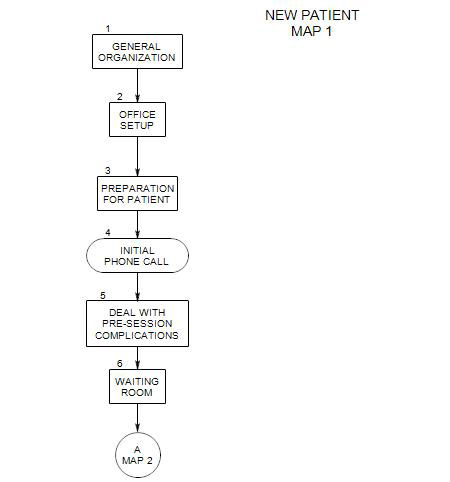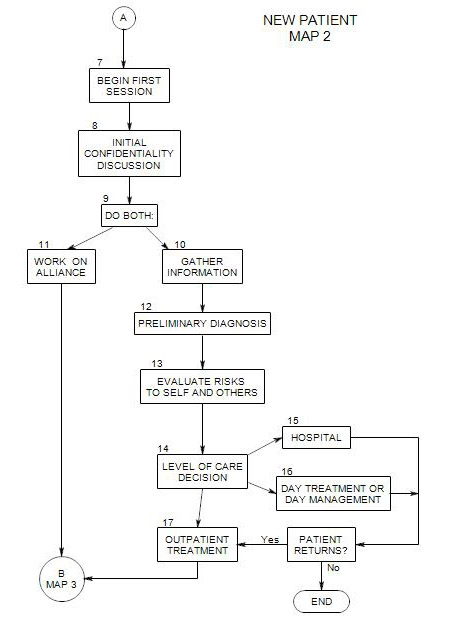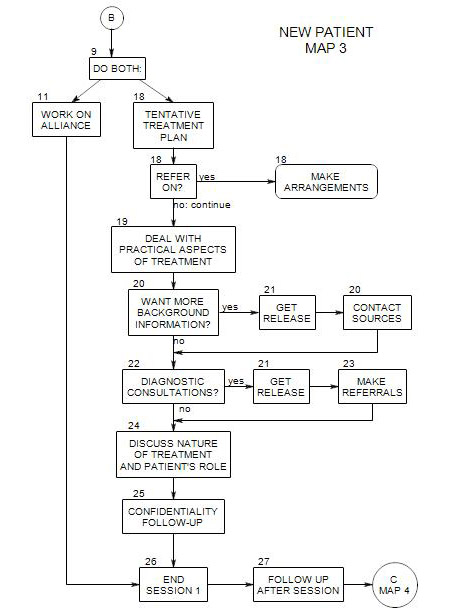31. REVIEW PRIOR SESSION AND INFO FROM CONTACTS
-
Follows Section 30 on Map 4
This can be done in a variety of ways. At some point in the session, you can ask for the patient’s reaction to the previous session. You can also raise issues that were previously touched on, and explore them more intensely.
Noting things that were said before can be a way of showing that you were paying attention, and that you need more information in order to be helpful. This in turn can encourage some patients to be paying attention to their issues between sessions.



